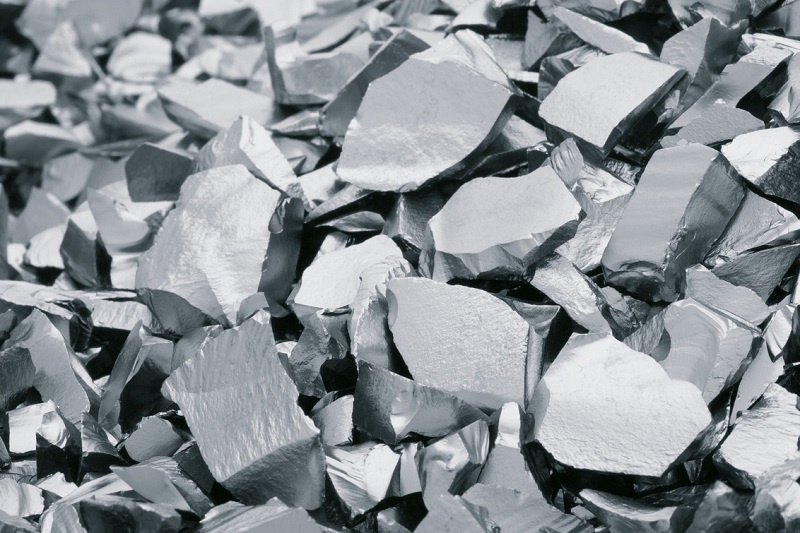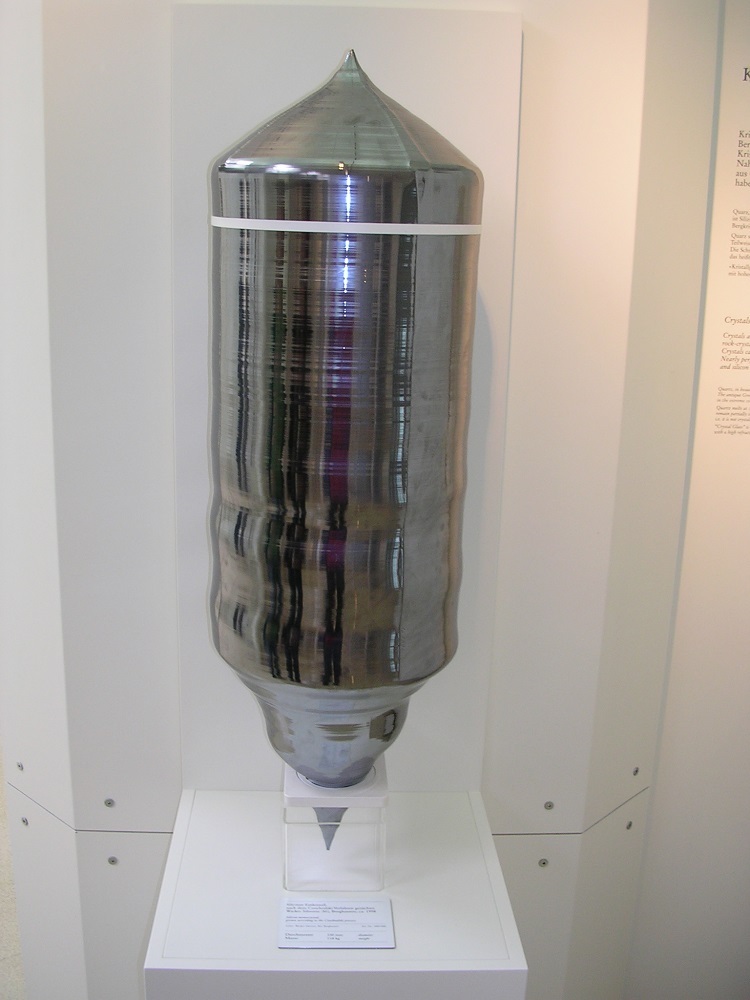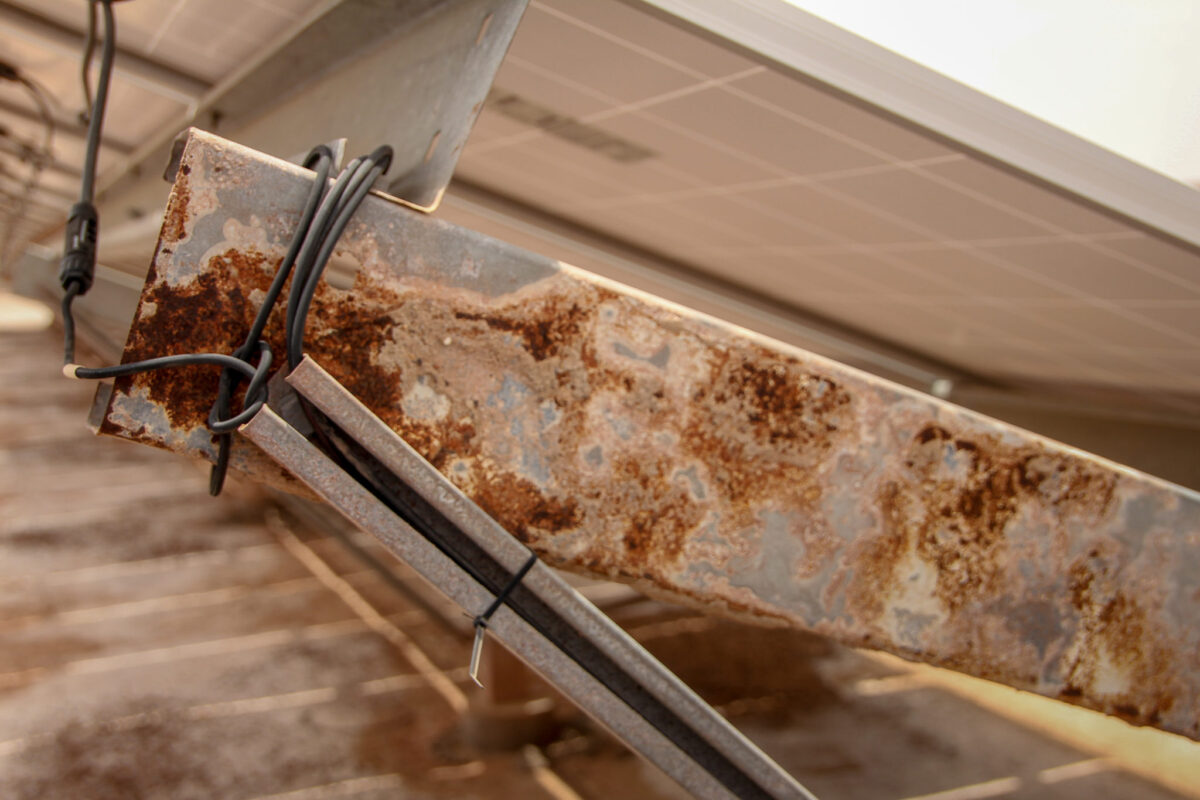At the end of February, Zhonghuan Semiconductor Chairman and General Manager Shen Haoping braved the bitter cold to personally inspect the installation of new monocrystalline ingot furnaces at the company’s factory in Inner Mongolia, nestled between the Blue Mountains and the Hetao Plateau.
This is the fourth phase of the facility in Hohhot, where Zhonghuan has had a presence for nearly a decade. The facility already has the capacity to make 5 GW of monocrystalline silicon ingots annually, and the new machines that are being readied will push this to 10 GW, which was more than the total global demand for solar PV in 2009.
Six and a half weeks before this, local government officials were visiting another new facility with 10 GW of annual output, 3,000 kilometers to the South in the subtropical mountains of Yunnan Province. Like Zhonghuan’s ingot facility, LONGi’s wafer slicing facility in Chuxiong Prefecture also processes monocrystalline silicon, which it slices into wafers as the raw material for solar cells.
This plant will be supplied by two massive ingot facilities which LONGi is building in Lijiang and Baoshan, also in Yunnan Province, as part of a wave of expansions that the company is undertaking. This includes ingot pulling and wafer slicing facilities under construction in the Ningxia Region of Northwestern China. IHS Markit expects LONGI to nearly double the 13.5 GW of ingot and wafer capacity that it had last year to 22.5 GW by the end of this year.
When potential expansions from other mono ingot and wafer makers are factored in, this points to a tectonic shift in the supply of monocrystalline silicon which threatens to reconfigure the entire upstream solar landscape and potentially push monocrystalline silicon solar into a dominant market position in much shorter timeframe than previously anticipated.

Image: Wacker Chemie
Mono versus multi
Monocrystalline (mono) silicon refers to silicon grown from a single crystal. This is done in ingot furnaces using the Czochralski Method, with multicrystalline (multi) silicon as a raw material. Using a seed crystal, a long tube of single-crystal silicon is literally pulled from a molten mass of silicon. before being sawn into semi-square blocks and sliced into wafers.
Mono silicon offers higher efficiencies than multi, as well as higher resistance to cracking during the cell and module production process. Due to the extra process it is inherently more expensive to make and has served as the raw material for high-efficiency cell designs, largely but not exclusively for rooftop applications, with multi representing the lion’s share of mass-produced solar.
In late 2015 the price of mono wafers fell to roughly the same price as multi, which changed the market dynamics and gave companies the choice of using either technology at a similar price.
A year later, demand for mono increased again, and prices rose; however this led to a shortage of mono products. According to independent analyst Corrine Lin, mono made up only 28% of the global wafer supply last year, but this was limited by a “severe” shortage. Despite LONGi, Zhonghuan and other companies furiously putting ingot and wafer factories online, they could not keep up with demand.
Much of this has been driven by the booming Chinese market, where monocrystalline solar made up 40% of demand in part due to the nation’s “Top Runner” program, a reverse auction program exclusively for high-efficiency products.
LONGi
The story of the rise of monocrystalline silicon is largely the story of LONGi and Zhonghuan. Of the two, Zhonghuan is much older, and has been in the semiconductor industry since the 1950s. The first mention of its future role in the solar industry was the company’s supply of solar cells to satellites in 2000 – the same year that LONGi was founded.
Unlike other ingot and wafer makers LONGi and Zhonghuan make solar products exclusively from monocrystalline silicon, and have risen quickly not only as the largest mono ingot and wafer makers, but as some of the largest and fastest-growing companies in this sector by any technology. LONGi in particular has seen a dizzying pace of growth, going from just over 2 GW of wafer capacity at the end of 2014 to 13.5 GW in the space of three years.
LONGi also makes mono cells and modules, including those based on emerging shingle-cut and multiwire technologies. However, the company’s real specialty – and most of its capacity – is in making ingots and wafers. Another notable characteristic of LONGi is the company’s very high level of R&D investment, which the company estimates was around 7% of its annual revenues in 2017. This is unheard of among Chinese PV makers, and roughly double the portion that either SunPower or First Solar spent last year.
One key to LONGI’s success in the ingot and wafer space may be its equipment, which is supplied by a company for whom LONGi is the sole client. “The core technology is in the hands of equipment suppliers,” notes Dr. Tian Xie, the director of quality management at LONGi.
It is unclear whether or not LONGi owns these equipment suppliers, and whether this very large R&D investment was in these companies or not. Either way, the company reports that it is paying off. “We definitely had a good return in the past few years in this kind of R&D investment, particularly crystal pulling and wafer slicing technology,” Xie told pv magazine.
This underlies LONGi’s incredibly ambitious expansion plans, with the company targeting 45 GW of ingot and wafer capacity in 2020.

Image: Massimiliano Lincetto
Polysilicon dynamics
The massive volumes of ingots and wafers that Longi and Zhonghuan are planning to produce has implications both upstream and downstream. First, someone will need to supply all the polysilicon from which to cast ingots. To meet its needs, Longi has signed a contract to buy around 64,600 metric tons of polysilicon from South Korea’s OCI over the next three years, for a total cost of just over $1 billion. Longi’s Xie notes that quality is an issue when buying polysilicon for monoingot and wafer production, and that imported polysilicon can be superior in this regard. “Concerning the quality of OCI’s polysilicon, it is good and better than some other players in China,” Xie tells pv magazine. However, he says that this is changing over time. “For the future we can see a lot of improvement in Chinese makers,” Xie notes. “They are doing a lot of activities to improve the quality of their production, and the quality gap between OCI and these poly makers will become smaller and smaller in the future.” Zhonghuan did not respond to pv magazine’s requests for an interview, however our sources indicate that the company is also sourcing polysilicon from OCI, Wacker, and GCL Poly. The company has entered into a joint development agreement with GCL for the supply of polysilicon from a plant under construction in the Xinjiang Region.
GCL is not only bringing its significant financial power and market share, but also technology to the deal. The company has acquired both fluidized bed reactor (FBR) and constant Czochralski monocrystalline silicon technologies from SunEdison, and notes that it is applying these technologies to less expensive, Chinese-made equipment.
Longi and Zhonghuan’s mono expansion may provide a substantial boom to both Wacker and OCI. And while Wacker was able to negotiate a minimum price with the Chinese government for exports of its polysilicon to China, other large producers such as Hemlock Semiconductor and REC Silicon will likely be left out due to high Chinese duties on U.S. polysilicon.
Downstream effects
There is still some uncertainty as to who will be buying the vast flood of mono wafers that LONGi and Zhonghuan will produce. Some of Zhonghuan’s product will go to SunPower through the DZS joint venture to make its P-Series modules in China, and LONGi will supply some of its wafers for its internal production. But LONGi is planning to use less than 40% of its wafer output internally, and this still leaves a huge volume of product.
Corrine Lin states that much of this will go to vertically integrated PV makers in China and Korea. And while it is unclear how much they can absorb, LONGi is bullish on a shift in demand. The company has the ability to produce mono at huge volumes and low cost, and argues that the technology’s higher efficiencies more than offset the increased cost of pulling mono crystalline ingots.
“LONGi is enabling an industry shift from multi to mono,” LONGi Technical Director Hongbin Fang told pv magazine.
One of the factors that may stimulate this is the success of passivated emitter rear contact (PERC) PV cells based on P-type mono wafers, and it is not accidental that LONGi recently achieved a new world record of 23.6% efficiency with P-PERC technology.
“We believe that P-PERC will be mainstream in the next few years,” predicts Xie.
And given the prominence of the Top Runner program, as Chinese demand grows, this could also shift the market.
Others are less optimistic about the potential for such a rapid movement. While Corrine Lin expects mono wafers to make up 40% of the roughly 100 GW of global demand this year, she also predicts that mono wafers will be oversupplied during the second half of 2018.
Costs and markets
LONGi is already proving that it can deliver on low costs. The company dropped the prices for its mono wafers from $0.67 to $0.63 per piece directly after the Chinese New Year, when Corrine Lin says no one was expecting it. This in turn caused other wafer makers to cut their prices, and potentially to renegotiate polysilicon contracts.
The anticipated oversupply in the second half of the year will inevitably depress prices further. “LONGi will not only compete with Zhonghuan, but with multi wafer companies,” predicts Corrine Lin.
For its part, LONGi states that it is attempting to grow the mono sector. “We want to create a healthy ecosystem, where everyone can grow together,” states LONGi Technical Director Hongbin Fang. However, an oversupply of mono wafers could easily lead to a price war during the second half of 2018, as companies attempt to hold on to market share despite falling and even negative margins.
Lin attributes LONGi’s success with prices in part to the company’s economies of scale, and this could be a key advantage in such a situation. Over the next few years it will be interesting to see if LONGi and Zhonghuan are able to achieve their ambitious expansion plans, and to see what this will mean for not only the wafer space, but the entire upstream landscape.
This article was amended on 16/04/2018 to remove a statement regarding the relative expected polysilicon capacities of GCL-Poly and LONGi.
This content is protected by copyright and may not be reused. If you want to cooperate with us and would like to reuse some of our content, please contact: editors@pv-magazine.com.



Wow! Nearly doubling from 13.5GW to 22GW this year and then planned doubling again to 45GW by 2020. I hope so! The world could definitely use all the solar PV it can get.
the cost of doubling capacity in 2018 is far less than in 2013.
Could we see 55-60gw mono demand in 2019? at nearly same price, appetite for high efficiency is high.
if softbank prefers mono, it may have kickstarted mono revolution.
India will follow softbank.